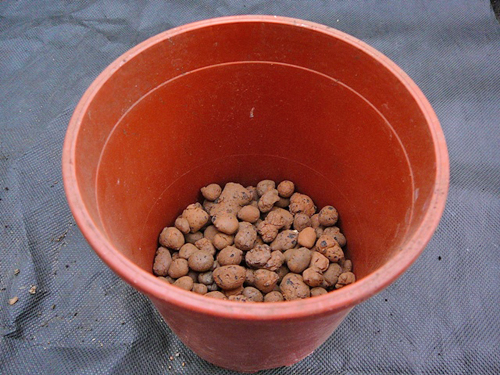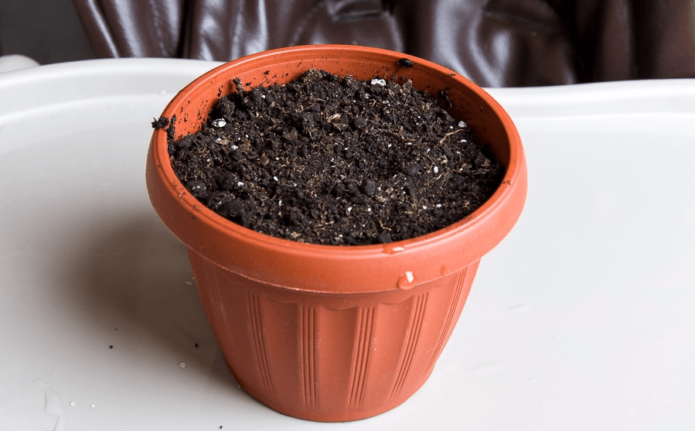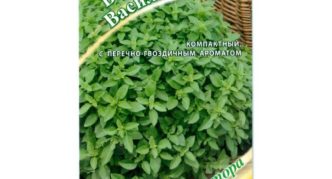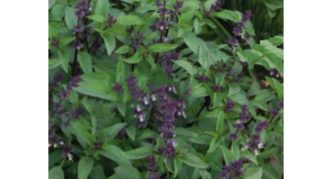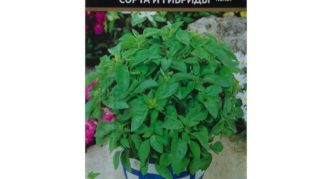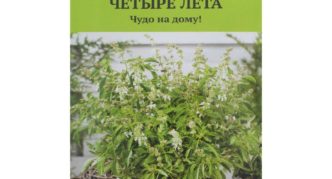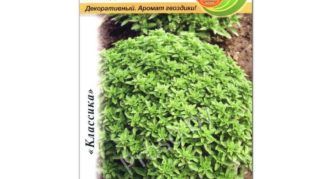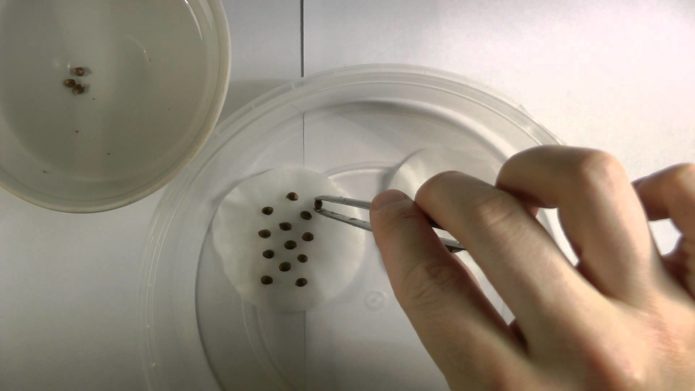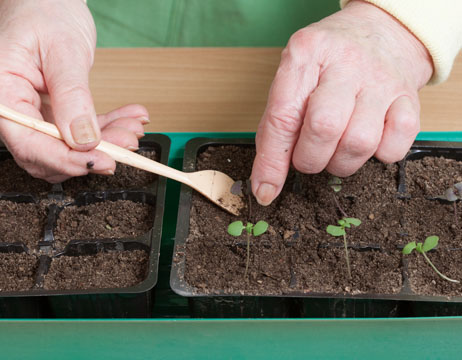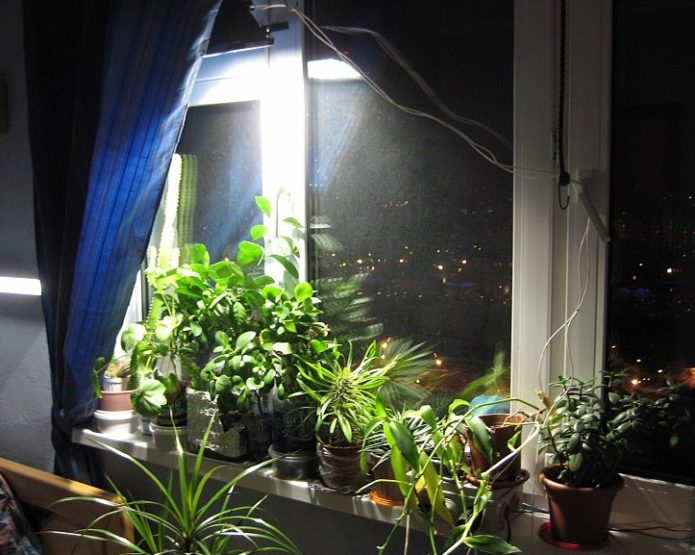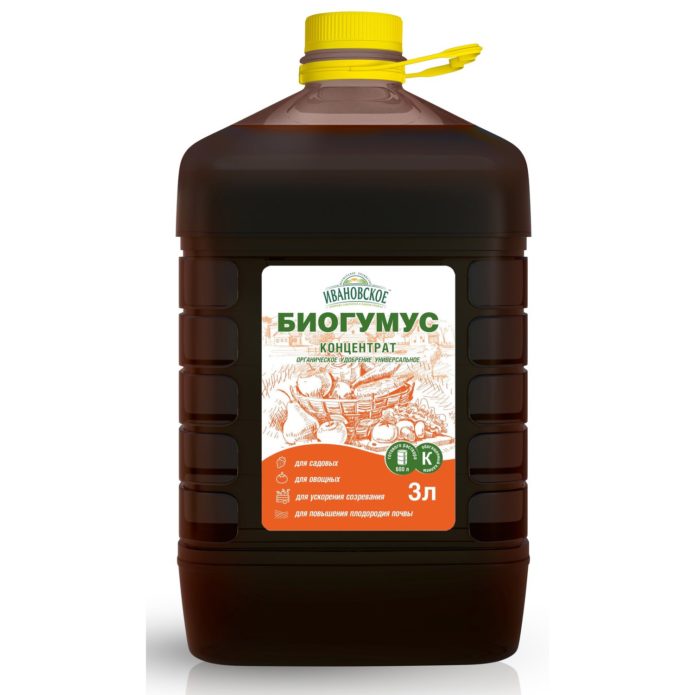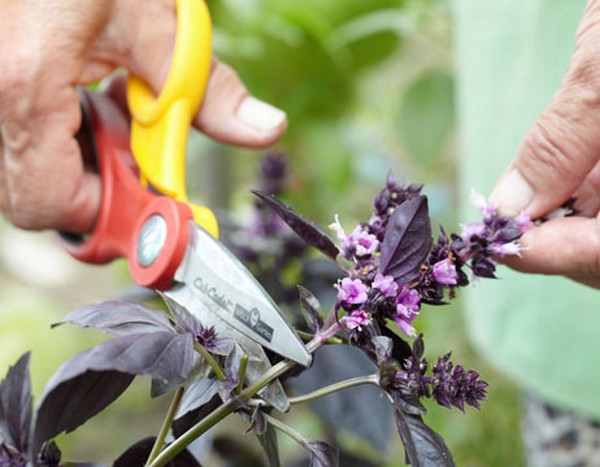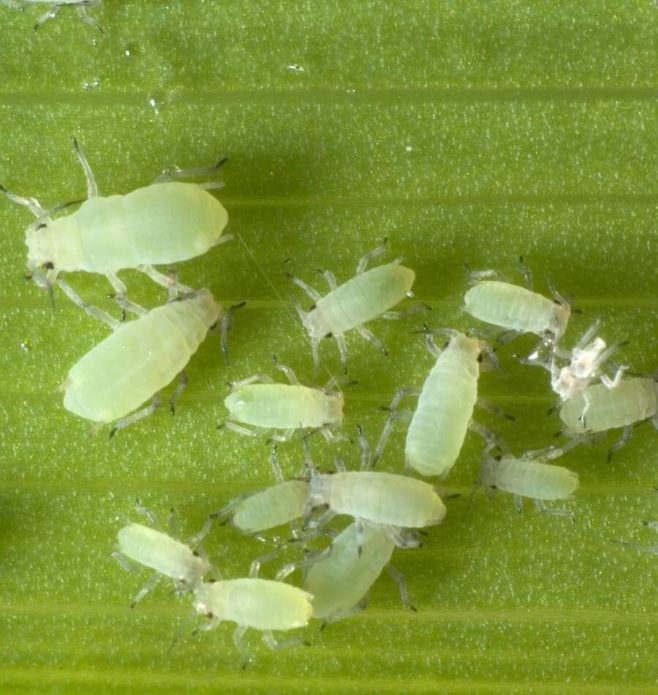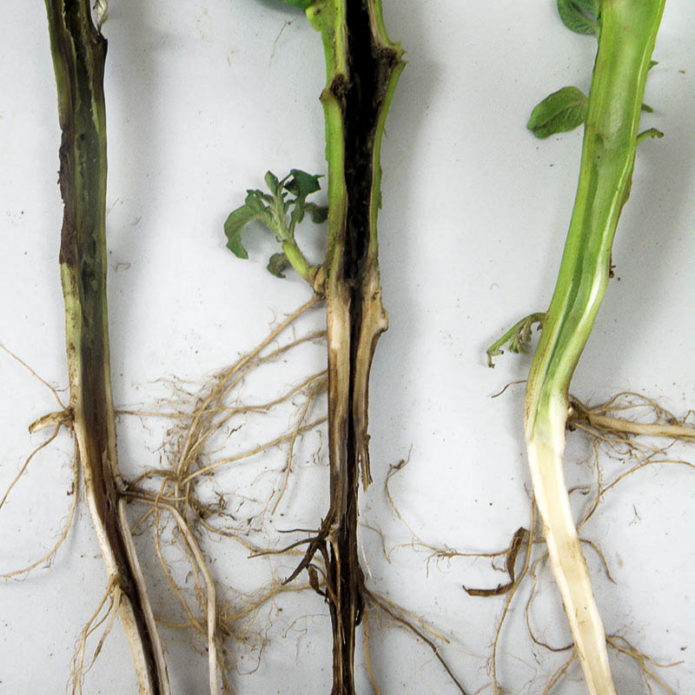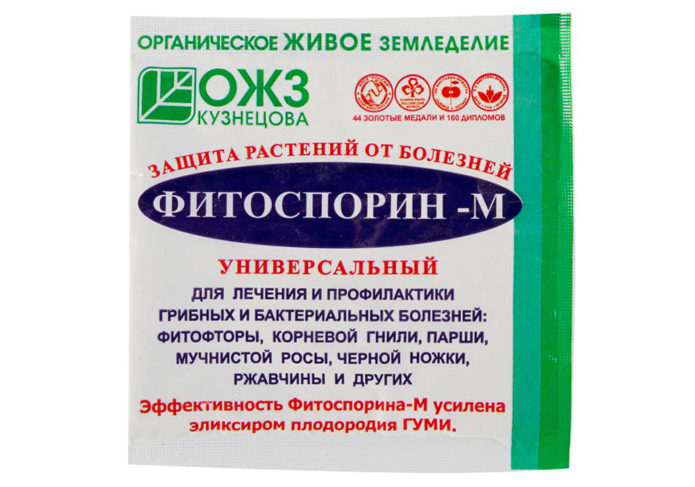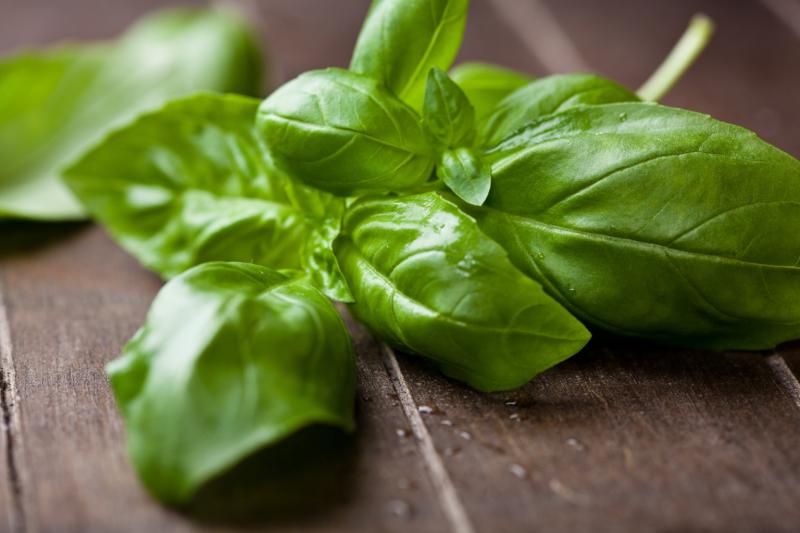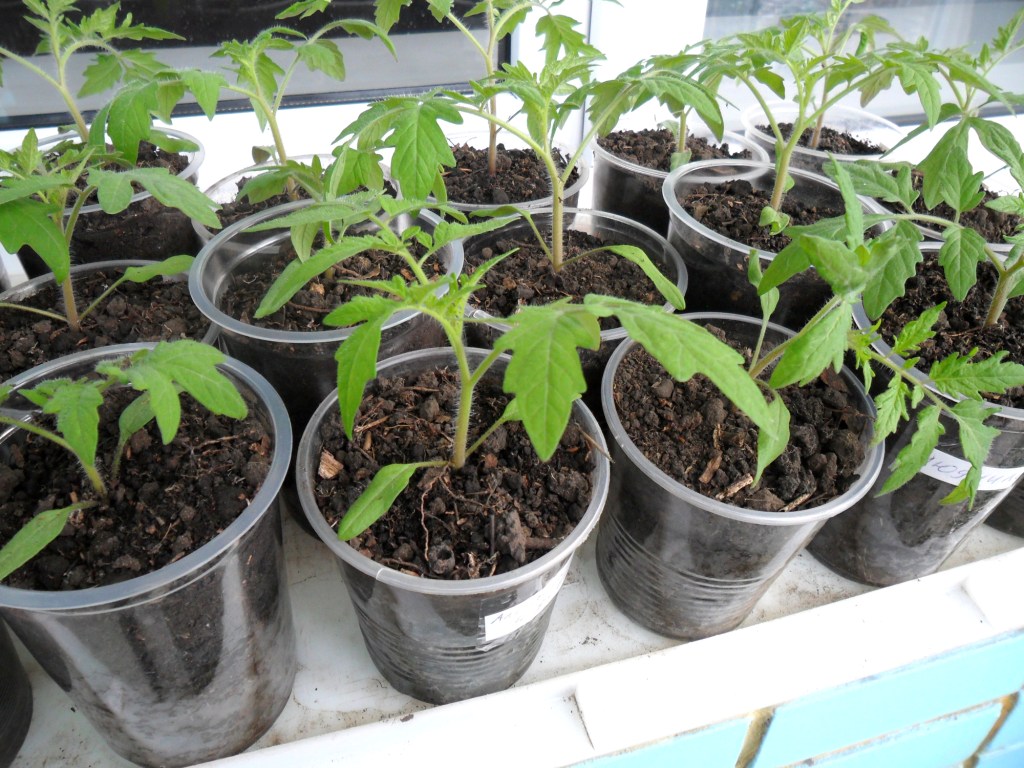Basil is an excellent seasoning for many dishes with an amazing smell. However, in our temperate climate, we can only indulge ourselves with the fresh leaves of this herb during the warm season. But with an effort, you can save this piece of summer and winter if you grow basil at home.
Content
How can you grow basil
Basil can grow well at home, it is undemanding to care, looks good on the windowsill and has a very pleasant smell. Before you start creating a mini-garden at home, you need to decide on a growing method. There are several of them:
- Growing from seeds without picking plants.
- Using a pick.
- Getting basil seedlings from the cuttings of an adult plant.
- Transplanting a young shoot from open ground.
These methods differ in labor intensity, but it is important to know that only when grown from seeds does basil have the longest growing season before flowering.
Preparing the container for planting basil
When choosing a container for planting, it must be borne in mind that the root system of the basil is well developed, therefore the distance between adult plants should be at least 10 cm, and the height of the soil layer should be about 12 cm. Longer containers are more compact, but regular flower pots can be used with 3 plants each. Any container must have drainage holes.
How to prepare the soil for basil
For growing herbaceous plants at home, light fertile soil is better, which you can prepare yourself, rather than buy. It includes:
- 1 part sand;
- 1 part of sod land (to obtain it, the sod layer is crushed and sieved with a sieve to remove pieces of plants);
- 3 parts of humus or leafy soil.
Everything is mixed until a homogeneous mass is obtained.
Procedure for preparing soil for basil:
- At the bottom of the container, drainage material is first laid: small stones, expanded clay, broken brick or fragments of ceramic dishes. This layer should be about 3 cm.
- Next, the container is filled with earth, not reaching a few centimeters to the edge.
- The soil is watered abundantly with water. The landing site is ready.
Selection and preparation of seeds
Good seeds are one of the main conditions for a harvest. Any kind of basil is suitable for planting, but it is better to give preference to low varieties with small leaves, since they are more suitable for home cultivation. These varieties include:
- Basilisk (smells like cloves and pepper);
- Clove scent;
- Anise gourmet;
- Gourmet mint;
- Compatto (with peppery aroma);
- Freshness (has a lemon scent).
Photo gallery: varieties of basil for growing at home
- Basil Basilisk smells like cloves and pepper
- Basil Gourmet anise has anise flavor
- Basil gourmet mint smells like mint
- Basil scent Fresh lemon-like scent
- Basil Clove scent lives up to its name
Planting seeds and getting the first shoots
To improve germination, seeds are recommended to be disinfected and soaked, although this is not necessary.
Basil seeds, like many other plants, are coated with a thin layer of essential oils that protects them from drying out. But due to the presence of such a film, basil often has poor germination. To reduce this negative factor, the seeds are soaked. For this you need:
- Take a cotton cloth (cotton pads can be used) and wrap the seeds in it.
- Then pour hot water over everything (about + 60 ° C).
- Wrap the seeds in cellophane and leave in a warm place for an hour. The seeds are ready for planting.
You can sow seeds dry. But after planting, the soil should be spilled with hot water, covered with foil and placed in a warm place.
When planting, the seeds should be covered with soil by about 1–1.5 cm. When growing basil using seedlings, the seeds are sown in peat pots so that during the dive the root system is not injured, and the plant adapts quickly. The basil dive is carried out after 2 true leaves appear.
The advantage of using seedlings is that the first month your mini-garden will be more compact, but replanting and getting the plant to a new place can lengthen the period for obtaining ready-made greens.
Video: we grow basil on the windowsill
Growing basil from cuttings
One of the characteristics of basil is that it propagates by cuttings. It is enough to take a small shoot or cut off the top of an adult bush and put it in water for 1-2 weeks. When the cutting has roots, it can be transplanted into a pot. But the lifespan of a plant grown in this way is slightly shorter than usual - about 4 months.
Taking care of basil at home
The main factors influencing the growth of basil at home are:
- watering;
- temperature;
- illumination;
- fertilizing with mineral fertilizers.
Watering
The frequency of watering basil depends on the temperature regime; in the autumn-winter period it is recommended to water it 1-2 times a week. But if your apartment is very warm, you can carry out the procedure more often: the soil in the container should not dry out, but excessive soil moisture is also undesirable. Basil also takes spraying well.
Both watering and spraying plants need water at room temperature or a little warmer. If you are using tap water, it is advisable to let it stand to reduce the amount of chlorine dissolved.
Water evaporates much less at night, so it is better to water in the morning to reduce the risk of waterlogging. After watering, the ground is slightly loosened.
Creating the necessary conditions for growing basil
Basil is a southern annual plant of the Clay family, originating from the tropical and warm temperate regions of Eurasia, therefore, it grows well outdoors in Russia only in established summer weather. At home, it is easier to ensure a suitable ambient temperature (this is a room temperature of + 20 ... 25 ° C). At lower temperatures, the plant loses its aroma and slows down growth.
Basil also needs a long day of light - about 14 hours a day. This is necessary for its active growth and the passage of photosynthetic processes. Therefore, it is better to place basil on the windowsills of windows facing south or southeast. But in winter this may not be enough, plants will need artificial lighting with a phytolamp. You can use a cheaper option - fluorescent lamps with white light. And although such lamps do not heat up during operation, it is better to place them at least 15 cm from the basil for more uniform illumination.
How and what to feed basil
If fertile soil was used to plant the basil, the plant does not need feeding. If it was planted in ordinary garden soil, it is necessary to additionally fertilize the soil. It is enough to irrigate once a month with the addition of minerals.
When choosing a fertilizer, keep in mind that basil is grown for green mass, so nitrogen should be the most important component of the subcortex. For example, you can use organic-mineral liquid fertilizer Biohumus for indoor plants and seedlings.
How to prune basil properly
The first leaves of the basil can be cut off when there are at least 6 of them (about a month after germination).
And then for the correct formation of the bush, the basil must be pinned: remove the apical shoot. In this case, the plant grows side branches, due to which the yield will be higher. This procedure is carried out every 2-3 weeks. In addition, when peduncles appear, they must be removed along with the 2 lower leaves.
Both pinching and taking leaves for eating are best done with scissors, not with your hands. This way you will not damage the root system.
Protecting basil from disease and pests
Basil is a disease-resistant plant that is rarely affected by pests. Disinfection of the soil before planting serves as a preventive measure. But aphid infestation from neighboring plants can occur. Signs of aphids:
- deformation, twisting of leaves;
- stopping the growth of bushes.
To destroy these pests, they are sprayed with Decis (1 g per 5 l) or tobacco infusion. For its preparation, 20 g of dry tobacco leaves are poured into 0.5 l of water and infused for 2 days. Next, the infusion is filtered and diluted with the same volume of water.
The danger for basil when it is grown in the house is the black leg fungal disease, in which the root collar of the plant is affected. The main reason for the appearance of this disease is an excess of moisture in the soil and an overly thickened planting.
When the first signs are found, a set of measures must be taken:
- Change the irrigation system.
- Loosen the soil more often. Its aeration reduces morbidity.
- Remove the blackened leaves and, if necessary, the entire plant. When digging up a sick specimen, it is necessary to capture the surrounding soil, and then add new soil. The soil should be treated with a solution of potassium permanganate.
Instead of potassium permanganate, you can use Fitosporin.
Growing basil at home is not an easy task.It is important to choose the right plant variety, prepare the soil and seeds, and then create the necessary conditions. But your work will be rewarded with the opportunity to always have a healthy and aromatic spice on your table.
